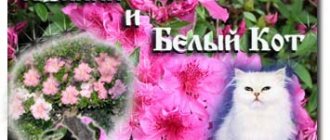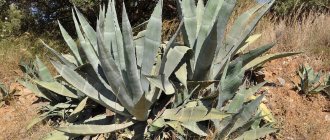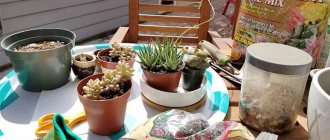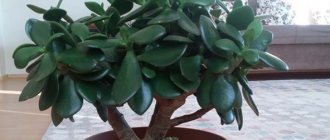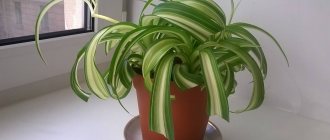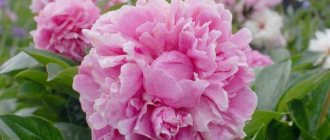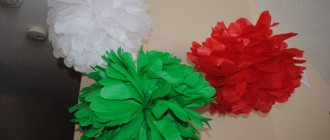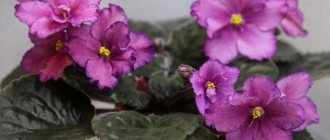The earth's flora is rich and diverse. Among the usual trees, shrubs, and herbs growing in certain natural areas, there are special plants that differ in appearance and method of survival in dry times. This group of evergreen, fleshy, long-lived plants was called succulents, which means they have the ability to store moisture in their tissues. A sufficiently developed shell and a slow evaporation process during the day ensure the preservation of water in the swollen leaves and stems.
Succulents - outdoor perennials
Only plants with special tissues capable of storing water can survive in regions with difficult, dry climate conditions. People have learned to grow succulents in a favorable home environment. Succulents on the street are still used as exotic decoration. The bright flowers of cacti and their unusual-looking fleshy leaves decorate and enliven sunny gardens. Unusual potted compositions, skillfully composed of different types of succulents, began to appear on the streets more often.
Potted arrangements outdoors
Levisia
Among succulents, a low bush strewn with large, ball-like inflorescences occupies a special place. This is Levisia. The plant is characterized by its resemblance to a living bouquet. A combination of numerous colors and shades came together in a small drought-tolerant bush.
Rejuvenated
The young flower is an ideal succulent for creating alpine slides and their lower tier. During flowering, it especially looks like a thornless cactus that accidentally ended up in the middle zone. Growing young and propagating an exotic plant is not difficult; it can take root in any soil, even without roots.
Bacopa
Ampelous bacopa, grown in hanging baskets, looks original in street design. Its unusualness is expressed in small leaves and flowers of different colors (blue, white, pink). These creeping succulents are able to form a root system wherever its shoots come into contact with the soil. A wonderful combination of colors and shapes is obtained in the vicinity of other flowering plants. Here you can experiment as much as you like.
Dorotheanthus
This miniature South African plant has become a characteristic feature of garden decoration. Succulents in the garden in the form of this bush transform the area with bright flowers and unusual-looking shoots. Many flower growers have chosen this species, similar to the usual daisies, which begins flowering in June and ends in mid-autumn. Such a long flowering period is possible with proper care. Tinted green leaves covered with shiny fibers, multi-colored and even two-color buds emphasize the unusualness of the flower stalks.
Apthenia
The South African and South American continents gave another evergreen plant called athenia. The peculiarity is expressed in the name, which in Greek means that athenia blooms at noon. The name is true. The fleshy leaves are bright green, wedge-shaped with smooth edges and have the opposite arrangement. Small round flowers bloom in their axils, shining in all shades of purple.
For your information! When succulents in the countryside finish flowering, seed pods appear in their place.
Delosperma
It stands out among succulents by the appearance of unusual salt crystals on the green surface, which resembles an ice cover on the leaves. Low shrubs are covered with a bright multi-colored scattering of petals during flowering. At home, they grow as perennial succulents; only some species manage to survive the winter in country garden plantings.
Delosperma is a representative of the succulent genus
Euphorbia myrtifolia
Gardeners fell in love with milkweed (Euphorbia) for its beauty and undemanding conditions. There are known varieties of annuals and perennials, evergreen bushes and tree-like frost-resistant plantings. Euphorbia, with its decorativeness and originality, contributes to the design of borders and flower beds. It is used in garden or park areas to create a rocky slide or rock garden. Various plants are planted there along with milkweed.
Ragwort
The number of flowering varieties is large, the most numerous among them is the genus Raspberry, numbering about 1200 species. Some of them attract with unusual silver foliage, another part has bright flowers similar to familiar daisies, and the third part best decorates, for example, the shoreline of a country pond. Herbs stand out from the variety of species. Tree-like ragworts (an African species), shrubs, and vines are known.
For your information! Some similarity with watercress gave the plant its name in the Russian manner.
Variety of species
Vertical gardening
Succulents are great for vertical gardening. They can be used to decorate arches and pergolas or make a special support structure or shelving.
Tradescantia, which can climb along a support or be grown in a flowerpot, perfectly complements the planting of succulents. And also, hoyas or wax ivy as a hedge.
In the form of ampels you can use:
- some types of ragworts (Rowlea, creeping ragwort and lemongrass)
- epiphyllum
- rhipsalis
- Schlumberg (Decembrist)
- sedums, such as Sedum morganianum ("donkey's tail"), creating magnificent cascades on fences and facades
Under comfortable conditions, these plants will definitely delight you with their flowering.
Ground cover or creeping succulents
Gardeners and landscape designers know plants that are called ground cover species. Their essence is that these low-growing and sometimes creeping seedlings actively spread across the area, capturing the territory in a special way. It turns out to be a kind of carpet of creeping succulents.
sedum
Succulents: home care and main types of the family
This flowering beautiful plant came to the middle latitudes, like other succulents, from dry American, African, and Eurasian regions.
Note! In addition to its decorative features, sedum (another name is sedum) is known as a medicinal painkiller that heals burns and wounds. Extracts from sedum juice are widely used in the manufacture of medicines, as well as for culinary purposes.
Survives drought thanks to the natural ability to absorb and retain water in the leaves. The stems of sedum are erect, up to 80 cm high, with inflorescences of different shades and shapes.
Portulacaria: decorative mini-tree
This variety of succulents is a miniature plant, the height of which does not exceed 40 cm. The trunk is made in the form of a powerful base of a dark brown hue. Its diameter can reach 5 cm.
The leaf plates are round in shape with a dense base inside. The plant has a powerful root system, which is capable of storing up to 80% of nutrients within itself. Such a crop must be planted in a sandy mixture.
Succulents in a flowerbed
Types of daisies - flowering border perennials
Nature has not deprived areas with arid climates of exotic vegetation. It was there that perennials with fleshy, thick leaves took root. People learned to grow them at home a long time ago, and succulents began to appear in flower beds, although this is still a rare occurrence. But the sunny garden has suitable conditions for cultivation. You can try planting them as annuals in a small area.
Landscape design will only benefit from the presence of voluminous flowerpots with rare plants on the street.
Succulents in a flowerbed
How to create a succulent garden with your own hands at the dacha
Due to inexperience and the noblest motives, one can end up with a flower mess out of a beautiful flower bed. Decisions that arise as a result of an emotional outburst are unacceptable here. Garden succulents will be lost in this confusion, all their beauty will become an unsightly stain.
As in any serious matter, here you need to plan, carefully think through everything, how to lay out the site, what seedlings to prepare.
- You need to prepare several identical specimens for planting, preferably an odd number of each.
- Schematically depict in what places what color spots will be placed.
- While maintaining symmetry, distribute a repeating color tact, that is, you need to draw a flower garden.
- Pay attention to the arrangement of silver-colored plants to give harmony and completeness to the design plan.
Important! If you use flower containers, you should note their large dimensions.
Home grown succulent garden
Bacopa
The most popular are Monnier and hanging varieties. Long hanging shoots look beautiful on hills. The earth's surface is lined with a rich carpet with moving flowering foci. Transitions happen smoothly. Little stars flash and gradually go out, only to light up again.
Read in detail about popular types and cultivation of Bacopa at home and in the garden
Succulents for an alpine slide
For example, you can improve your garden in the Moscow region by installing a man-made rock garden. This is a bold action; every flower lover is capable of being original in his own area. Outdoor succulents are used for this purpose. An ideal place would be a well-lit area of the garden. The background will be the facade of the building.
Forest cyclamen and other outdoor species: garden, Kos, mix
However, before you start designing the garden, it won’t hurt to work with special literature and enrich your knowledge about the plant world.
Succulents in the garden: planting and care
Unusually beautiful and easy to care for - this is how succulents are characterized. In any region: in Siberia, the Urals and western regions, the requirements are the same. They need plenty of light, a convenient container or pot to grow in, and minimal care from the grower.
Housing design and public institutions benefit from growing unpretentious flower stalks.
Succulents in open ground: how to winter
Wintering succulents in temperate regions became possible thanks to the passion and resourcefulness of gardeners and flower growers. It was through the efforts of enthusiasts that cacti and other southern representatives of the plant world came into the open ground. Even wintering succulents for the garden have appeared, and agrotechnical methods have been developed for cultivating them in open space.
What soil should I plant in?
As strange as it may sound, you need to grow succulents in open ground in loose, poor, clayey and even rocky soil. Such conditions allow moisture and air to freely penetrate to the roots. Regarding clay soil, experts say that this mineral substrate meets the basic requirements:
- inertia;
- chemical neutrality;
- ability to retain water;
- aeration;
- strength.
Note! River sand, fine gravel, and activated, but not medical, carbon can be used as soil loosening agents.
You should not overfeed succulents; this causes them to bloom less often, the color of the flowers fades, the needles do not develop enough, and the plants lose their survival rate during the wintering period.
Alpine slide in the yard
Fertilizer
Flower growers should not frequently water, feed with black soil and heat succulents in winter. Winter is a time when it is better to leave plants alone and not fertilize them. Excess fertilizer provokes the growth of multiple thinned, weak shoots.
In spring, fertilizing is carried out no more than once a month with low concentration fertilizers. Special mineral supplements can be purchased at flower shops.
Sedums (sedums)
Sedums represent such a diverse family that by planting at least 10 species on your site, you will get a beautiful landscape in 3-4 years without any effort.
And if you correctly place accents of conifers, large stones and stone scattering, then all that remains for you is to enjoy the modest and exotic splendor of a garden of succulents. By the way, this is an excellent option for a summer house, where there is already a lot of trouble.
Sedum Murale
Sedum Murale
(Mural) resembles inflatable Christmas trees; its lush green foliage turns brownish-red in the sun. During the flowering period, the plant is covered with pale pink flowers.
Sedum white Hillebrantha
Sedum Hillebrant can have different colors. Just like its previous relative, it forms nice mats with foliage ranging from light green to orange and red. And they call it white because during the flowering period it is covered with white inflorescences.
Rhodiola rosea (sedum rosea)
Rhodiola rosea will not only decorate the garden, but will also improve the health of your loved ones, because this particular plant is known in folk medicine as the “golden root”. And in the garden, an overgrown individual forms nice spherical clumps with bright dots of small umbrella inflorescences.
Diseases and pests of succulents
Beautiful, undemanding plants have earned popularity due to their whimsical shapes and ease of care. But they can get sick from improper care, damage by insects or fungi, or rot.
Therefore it is necessary:
- observe the watering and feeding regime;
- Provide the bottom of the planting hole with a drainage mixture;
- there should be a hole at the bottom of the vase;
- propagate vegetatively in spring and summer, keeping the cuttings in the air for several days before planting, thereby protecting against the penetration of parasites into the cut.
The distribution of succulents in gardens and parks is justified. The originality and uniqueness of the natural creation create a good mood, ennobling the area. The main thing is to choose the right types of plants and provide them with proper care.
Growing Brighamia at home
This moment is a low palm-shaped plant, which is popularly called the Hawaiian palm. The foliage is bright green. After some time, flower stalks may appear near the top. They are decorated with beautiful flowers of a soft yellow hue.
For active growth of the succulent, it is necessary to provide regular sunlight and high-quality watering once a week.
The plant needs feeding with potassium compounds. They must be submitted twice a year. In early spring and late October, when the growing season comes to an end.
Levisia
The place for planting should be chosen in partial shade. Direct rays are bad for the health of the plant. It is recommended to cover the root collar with gravel to avoid waterlogging. There are two ways to grow outdoors: sowing seeds before winter (late October) and placing seedlings closer to summer.
Representatives of this vegetation overwinter under the cover of a glass jar, which prevents excess moisture from entering the above-ground parts of the plant during the thaw period. Deciduous specimens tolerate frost even without shelter. Care should be taken when watering: water should fall strictly into the root zone, without touching the leaf rosette. During prolonged rainfall, it is necessary to limit moisture by covering the bushes with halves of plastic containers.
Blooming Levisia in composition
Rejuvenated
The stone rose is suitable for beginning flower growers, winning love and recognition for its low maintenance requirements and varietal splendor. The harshest winters (little snow) and the driest periods do not cause much harm to this succulent. Properly selected conditions reduce all the hassle to frequent weeding.
A bright, open place and sandy soil promote completely independent growth. After three or four years, thinning of the plantings is recommended. This will help preserve the original characteristics and avoid shrinking and degeneration of the planted variety. Does not require additional watering.
It is most convenient to place seedlings in the ground. The main plantings take place during the month of July. If necessary, the deadlines are extended into the autumn period. It is important that the plant has time to take root before the onset of cold weather. The most popular representatives:
- Queen Amalia's young (S. reginae-Amaliae). Compact brown rosettes combine very well with their green relatives. Collected in a short panicle, the flowers have pale yellowish tints. Blooms in mid-summer;
- Cobweb (arachnoideum) acquired its name due to its specific pubescence. It seems that a conscientious spider has carefully worked on each rosette. The flowers are quite large and look like pink stars;
- Roofing (tectorum) is the most resistant type with excellent frost resistance. Due to its use for green roofing in the Middle Ages. According to signs, it protected against lightning strikes in the home. Interesting are the jagged leaf edges with a reddish border around the perimeter of the leaf blade;
- Hybrid (S. x hybridum) collects a large number of varieties, differing in the abundance of shapes, colors of leaf blades and sizes. Each of the specimens is self-sufficient in decorative terms.
Delosperma
Semi-shrub-type perennials with a woody stem base are evergreen even when kept outdoors. Planting into the ground is carried out in May, mainly through seedlings. Some frost-resistant species tolerate very low temperatures (down to – 23°). However, dry shelter (spruce branches) is required for the winter.
A large selection among representatives allows you to grow both in the southern regions and in rather cool regions of Russia. Requires a sunny location with no shade. In extreme heat, regular watering is required. If kept in containers outdoors, they can be sent indoors for the winter.
Among the common types:
- Abundantly flowering (floribundum), there is a cold-resistant variety “Stardust” (Stardust);
- Cooper (cooperi), “southern” content;
- The Fuchsia Pink (Table Mountain) and Dwarf Pink forms can withstand low temperatures.
